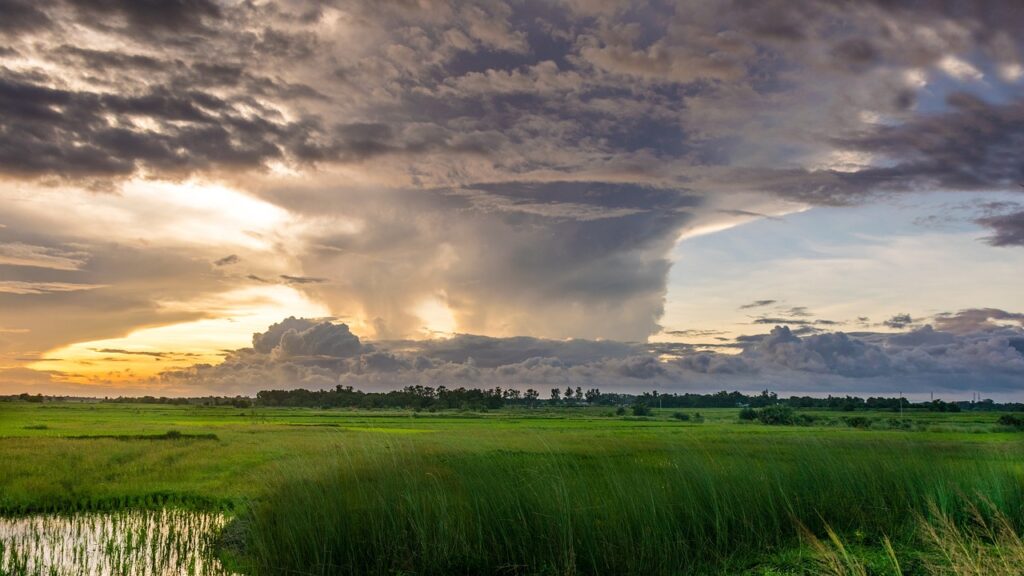
Table of Contents
Key Takeaways
- Hurricanes are named to help with effective communication and public awareness.
- The World Meteorological Organization maintains and updates the list of hurricane names.
- Names can be retired if a hurricane is particularly deadly or costly.
- The naming process for hurricanes is global, and names differ by region.
Table of Contents
- History of Hurricane Naming
- The Naming Process
- A Global Effort
- When Names Are Retired
- Public Awareness and Communication
- Regional Differences in Naming
Understanding how hurricanes get their names involves various factors. Names are predetermined and alternated by gender and region. The World Meteorological Organization selects names based on an annual list, retiring those associated with severe storms. This systematic approach aids in communication and tracking during hurricane seasons.
History of Hurricane Naming
The history of naming hurricanes dates back to the early 20th century. Before this practice was established, hurricanes were identified only by their latitudinal and longitudinal coordinates. This method created significant confusion and inefficiency in communication, particularly during emergencies. To address these issues, meteorologists started naming tropical storms to ensure more precise and faster dissemination of information. The practice gained popularity and eventually became standardized. Understanding how hurricanes are named helps us appreciate the advancements in meteorological science and communication over the last century.
Initially, hurricanes were often named arbitrarily. For instance, Atlantic hurricanes in the 19th century were sometimes named after saints’ feast days occurring at the same time as the storm. However, as meteorology advanced, a more systematic naming scheme became essential. By the mid-20th century, formal naming became the norm, leading to our structured and efficient system. This evolution in naming practices was pivotal in enhancing the accuracy and effectiveness of hurricane communication efforts worldwide.
The Naming Process
The World Meteorological Organization (WMO) carries out the hurricane classification process. They maintain and update a rotating list of names yearly, which are used sequentially as storms develop. This list includes names from various cultures, ensuring diversity and easy recognition worldwide. Each region affected by hurricanes, such as the Atlantic or the Pacific, has its name. Once a hurricane forms, the next name on the list is assigned to it, helping to distinguish it clearly from other storms. This meticulous process ensures everything during hurricane season, enhancing effective communication and public awareness.
The WMO’s process is a collaborative effort involving meteorological experts from around the globe. These experts review proposed names for compliance with international standards and cultural relevance. Drawing from an international pool of names, the system respects linguistic and cultural nuances, making it easier for people in different regions to identify and remember storm names. This global inclusivity ensures the naming process remains relevant and effective in all affected areas.
A Global Effort
Naming hurricanes is a coordinated international effort involving meteorological agencies worldwide. The WMO’s Hurricane Committee meets annually to review and make necessary changes to the list of names. This global collaboration ensures that the names are suitable and culturally appropriate for all regions likely to be affected by hurricanes. By involving various international stakeholders, the process garners comprehensive feedback and reflects cultural sensitivities. This ensures the proper names are chosen and resonate well within the international community, making global hurricane communication seamless.
This cross-border cooperation is crucial for maintaining consistency and effectiveness in hurricane communication. Each regional committee contributes insights and suggests improvements, ensuring the naming process evolves with changing global dynamics. This unified effort facilitates effective disaster communication and strengthens international cooperation in disaster management and meteorology.
When Names Are Retired
Sometimes, a hurricane name is retired from the list if the storm was particularly destructive or deadly. This practice is done to avoid insensitivity and confusion in future references. For example, the names Katrina and Sandy have been retired due to the devastating impacts of hurricanes with these names. Retiring a hurricane name is a respectful nod to the communities affected and ensures that the names of infamous storms are not reused. For more details on the process and rationale behind name retirement, refer to this article from The Weather Channel.
The decision to retire a name is not taken lightly. It involves extensive discussion and consideration by the WMO’s member countries. The names are usually retired if they’ve had a catastrophic human impact, high fatality rates, or significant economic damage. This practice ensures that the names of these storms are preserved in history, serving as a solemn reminder of their impact.
Public Awareness and Communication
One of the primary purposes of naming hurricanes is to improve public awareness and communication. By assigning a memorable name to a storm, it becomes easier for media outlets, emergency services, and the public to discuss and prepare for the impending threat. Clear, straightforward communication during a hurricane can significantly enhance public preparedness and response. The name gives the storm a distinct identity, making it easier for people to remember and respond to warnings. Effective communication through naming can save lives and reduce the damage caused by hurricanes.
Names evoke a more robust public reaction than numerical identifications, making it easier to communicate warnings and updates. Media outlets use these names to provide more engaging and accessible reports, which helps keep the public informed and alert. This naming system not only aids in the clarity of communication but also contributes to the global public’s understanding and readiness.
Regional Differences in Naming
The naming conventions for hurricanes can vary by region. In the Atlantic, names are primarily in English, Spanish, and French to cater to the diverse communities affected. This multilingual approach ensures broad understanding and acceptance. On the other hand, tropical cyclones in the Northwest Pacific are named using a mix of names contributed by several Asian countries. These names reflect the cultural diversity of the regions impacted and ensure that the public receives and understands the information effectively. Detailed insights into these regional differences can be found in this article from CNN.
The regional approach to naming also considers the uniqueness of local languages and dialects. This customization ensures that the local populations easily pronounce and remember names, enhancing the efficacy of storm warnings. It also instills in nearby communities a sense of accountability and ownership for being watchful and ready for hurricane season.
